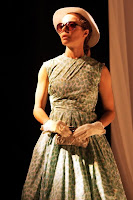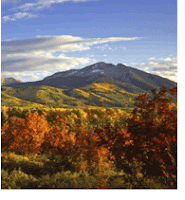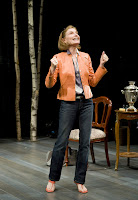
JIMMY STEWART wrote this essay for
Guideposts magazine many, many years ago. It’s worth reading again, especially for all those of us who loved him so much.
The hour was late as I sat alone in a blacked-out Nissen hut, afraid of what the dawn would bring. It was a dark night in England during World War II, and I was flying B-24s (Liberators, the big four-engined bombers were called) as a squadron commander with the U.S. Eighth Air Force.
Our group had suffered heavy casualties during the day. As the big ships settled in for landing, wings and fuselages bore ragged holes from fighter attack and antiaircraft fire. Bright red flares soared from planes carrying wounded, and ambulances raced to meet them.
Men on the ground anxiously counted our own squadron's incoming planes... 9... 10... 11... and then, only an empty gray sky. Where was the 12th? Worried eyes swept the misty horizon, straining for some tiny dot, as hearts hoped against hope. But crew members in the returning planes knew that the missing ship would never land here again; German fighters had shot it down in flames.
Now there would be the painfully written letters to mothers, fathers and wives, along with prayers that some of the crew might have parachuted safely.
I stepped over to the little iron stove, scooped coal into it, and stared into the dull red embers. Tomorrow at dawn I would lead the squadron out again. Our target lay deep in enemy territory. Friendly fighters could accompany us only partway because of the distance involved. For much of the long flight we would be on our own—slow-moving targets for the German fighters, the barrel-chested FW-190s, the sleek ME-109s.
Imagination can be a soldier's worst enemy. My forehead perspired as I visualized what would happen: my Liberator shuddering and lurching as we plowed through curtains of flak, the sky filled with the ugly brown-black shell-bursts, German fighters boring in from every direction...
I slumped down at my desk.
Fear is an insidious and deadly thing. It can warp judgment, freeze reflexes, breed mistakes. Worse, it's contagious. I knew my own fear, if not checked, could infect my crew members. And I could feel it growing within me.
Out in the night, in some distant hangar, an aircraft engine growled into a crescending roar, then subsided into quiet as a night maintenance crew tested it for the upcoming mission.
I turned off the desk lamp, and my chair scraped the cement floor as I pushed it back. Walking to the window, I pulled back the blackout curtains and stared into the misty English night. My thoughts raced ahead to morning, all the things I had to do, all the plans I must remember for any emergency. How could I have a clear mind if it were saturated with fear?
What was the worst thing that could possibly happen? I asked myself. A flak-hit in the bomb bay? A fire in one of the wing tanks? A feathered propeller on a damaged engine that would bring the enemy fighters swooping in (they always singled out a crippled bomber)? One by one I hauled my worst fears out of the closet, as it were, and tried to face up to them. Was that the best way to conquer them? I wasn't sure.
Closing the curtains, I returned to my desk, snapped on the light, and pulled out a notebook. I began writing out a list of emergencies and how I would handle them. Everything I could think of. If our ship is mortally hit, I will try to get the crew out before I bail out—provided it doesn't blow up first. If I'm shot down and captured, I will reveal nothing but my name, rank and serial number. On and on, all the grim possibilities.
Finally I finished writing and walked over to my metal cot. The springs creaked protestingly as I sat down. I stared unseeingly across the room. The deep-rooted fear was still there. It wouldn't go away.
I thought of my grandfather, who had fought in the Civil War, and my father, who had served in both the Spanish-American War and in the First World War. "Were you afraid?" I'd asked as a youngster back in Indiana, Pennsylvania, when we talked about Dad's experiences in France.
I could remember the faraway look in his eyes as he nodded. "Every man is, son," he said softly. "Every man is." But then he would always add something else. "Just remember that you can't handle fear all by yourself, son. Give it to God; He'll carry it for you."
My eyes misted as I remembered the letter Dad had given me when I left for England. He had written it at his old oak desk in his hardware store. I carried the worn and creased piece of paper always, and each time I read it, I seemed to learn something new:
"My dear Jim, soon after you read this letter you will be on your way to the worst sort of danger. I have had this in mind for a long time, and I am very concerned. But, Jim, I'm enclosing a copy of the 91st Psalm. The one thing that drives out fear and worry is the promise in it.
"I'm staking my faith in these words. I feel sure that God will lead you through this mad experience. I can say no more; I only continue to pray. God bless you and keep you. I love you more than I can tell you. Dad."
I always choked up when I read that letter. Never before had Dad said that he loved me. I knew he did, but he had never said it, until the letter.
Again, I read the psalm:
"...I will say of the Lord, He is my refuge and my fortress... His truth shall be thy shield and buckler. Thou shall not be afraid for the terror by night; nor for the arrow that flieth by day... For He shall give His angels charge over thee, to keep thee in all thy ways. They shall bear thee up in their hands, lest thou dash thy foot against a stone..."
They shall bear thee up in their hands. What a promise for an airman!
There on the creaking cot with the night pressing in, I read those comforting words as a prayer. Then I relinquished to the Lord my fears for the coming day. I placed in His hands the squadron I would be leading. And, as the psalmist promised, I felt myself borne up...
Somewhere on a distant farm a cock crowed; dawn would be early. I got up and once more drew back the blackout curtains. The mist had cleared, and above the dark trees the sky was sparkling with stars.
I had no illusions about the mission that was coming up. I knew very well what might happen. And I knew that fear would ride with me. But I would live with it—and almost welcome it. Because, in its proper place, it would be an asset, sharpening perceptions, amplifying skills and heightening the capacity for quick decisions.
I had done all I could. I had faced each fear and handed it over to God. And now, no matter what might happen, I knew that He would be with me. In this world or the next.



















